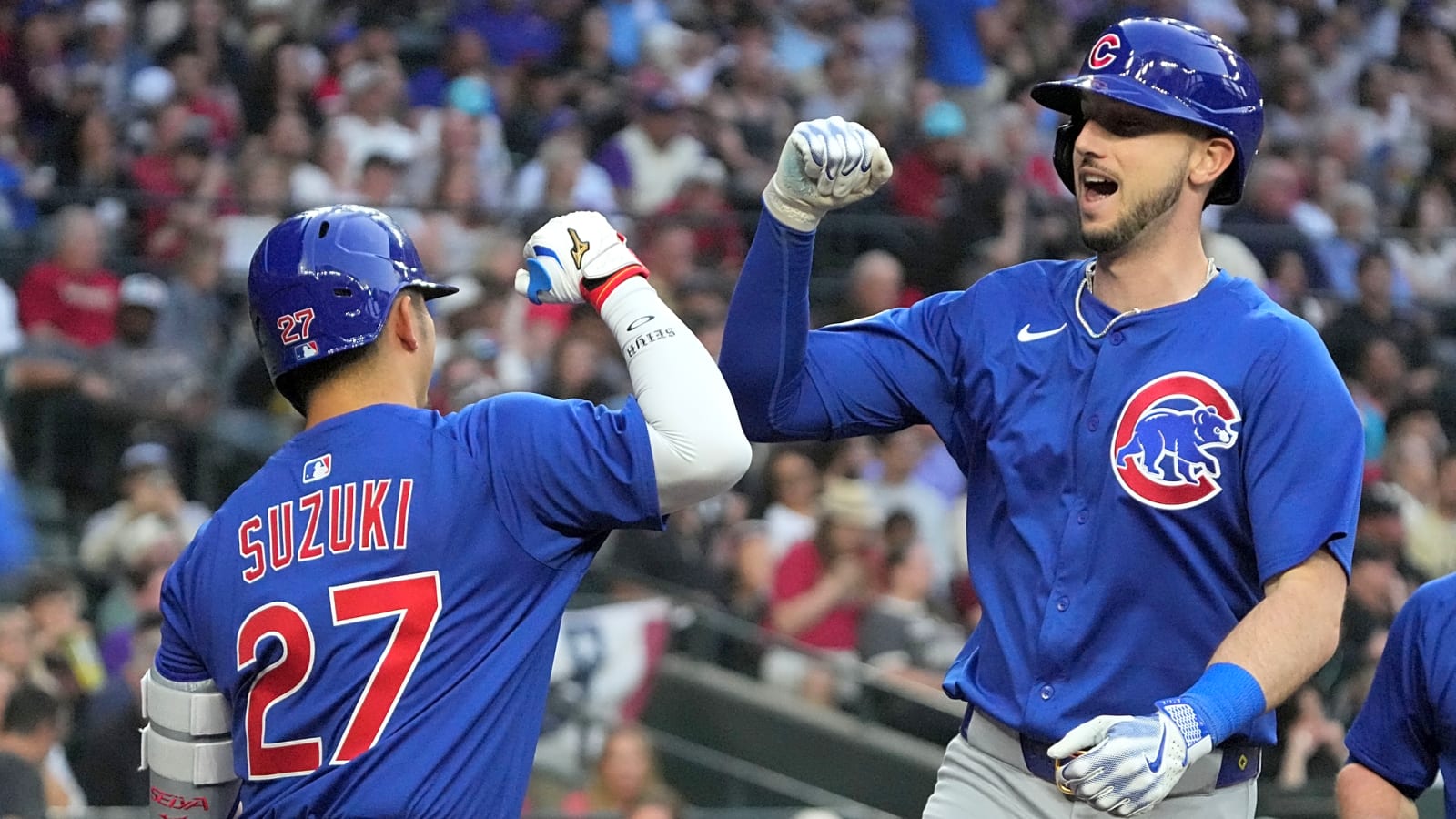
Cubs are crushing pitchers with patience at the plate
In an era of max-effort pitching and uppercut swings, the Chicago Cubs (9-6, 1st place, NL Central) are choosing a different approach: patience. They're not just winning games; they’re dragging opponents through long at-bats, racking up walks and punishing every mistake that follows.
And it’s working.
Entering play Friday, the Cubs lead Major League Baseball in runs (96), RBI (93), walks (76) and hits (130). They rank in the top five in home runs and doubles and are eighth in OPS.
But the real story isn’t the slugging. It’s how they’re getting there.
They're being aggressive in the zone, not outside of it. Call it selective aggression.
Per MLB.com's Jordan Bastian, Chicago’s 13.0% walk rate entering Wednesday led the league, and their ability to lay off pitches outside the strike zone — just 29.7% chase rate, fifth-best in MLB — has made every inning feel like a grind for opposing pitchers. They’ve also swung at 69.2% of strikes in the zone, the kind of balance that gets into a pitcher’s head early and often.
Outfielder Kyle Tucker, the team’s high-profile offseason addition, has set the tone.
“Earlier in my career, I could hit pitches off the plate,” Tucker told Bastian. “That doesn’t necessarily mean I should swing at them or want to do that. I think if you just have good plate discipline and are able to take those pitches that are close or just off or whatever, and get into better counts, you’ll get better pitches to hit.”
Tucker has done just that. He leads the league in hits (19), is second in doubles (6) and walks (14), and is a constant on-base presence. More importantly, his approach has become contagious.
Chicago’s overall swinging-strike rate is down from last year (10.4% vs. 11.0%), and their combined called-and-swinging strike percentage — a telling indicator of command at the plate — is the lowest in baseball.
It’s not just about drawing walks or boosting on-base percentage. The Cubs are doing something more annoying — and more dangerous: they’re making pitchers work. More foul balls, longer innings and inflated pitch counts mean more bullpen arms and more chances for mistakes. And in today’s game, even the hardest throwers get exposed when tired.
Picture it: fourth inning, two on, one out. A pitcher’s at 70 pitches already. Then comes another 8-pitch at-bat from Chicago’s seven-hole hitter. That’s the kind of suffocating pressure this lineup is applying — and it’s the kind of approach that wears down even elite staffs by the sixth inning.
It’s no accident that many championship-caliber teams in baseball history have thrived with this kind of strategy. Get on base, grind counts and capitalize late. The Cubs seem to be leaning hard into that blueprint — and early results suggest they’re built to stick around.
They don’t flail. They don’t chase. They wait — and they punish.
If they keep turning every at-bat into a fight, Chicago won’t just be a nice April story. They'll be a problem no one wants to face when the games really start to matter.
More must-reads:
- Chicago Cubs GM drops clue on Kyle Tucker extension
- Dodgers look to get back to winning ways at home vs. Cubs
- The 'Most recent cycle by MLB team' quiz
Breaking News
Customize Your Newsletter
 +
+
Get the latest news and rumors, customized to your favorite sports and teams. Emailed daily. Always free!
